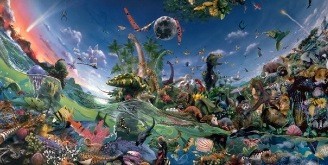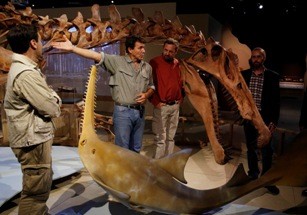Lin Na, a Chinese researcher based in Germany, has found the answer to the question on what caused the sudden diversification of species on the planet during the Cambrian Period, ending centuries of searching for the answer to the puzzle.
Lin Na found that niche formation and tectonic plate movements could be the reason for this sudden change in the evolutionary process.
According to paleontologists, an event known as the Cambrian explosion occurred about 540 million years ago, greatly influencing the evolution of life on the planet. Countless new species evolved almost simultaneously during this period of time, which are considered the predecessors of the present main animal groups.
The Global Times reported that researchers at the Friedrich-Alexander University of Erlangen-Nuremberg (FAU) evaluated a large database of fossils from the Cambrian Period and analyzed the diversity of all known species from this period on a local, regional and global level. This was done to understand the biological principles that resulted in the Cambrian explosion and to find out what caused the event, the report added.
The report said that the findings of the researchers have recently been published in the U.S. Journal Proceedings of the National Academy of Sciences.
Lin, who works for FAU's Chair of Palaeoenvironmental Studies, was quoted as saying that different populations which evolved differently played a much more essential role than the growth in the number of species within local ecosystems in the early Cambrian Period.
The Chinese researcher said that as species became more adapted to their environment, their ecological niches became more restricted. She added that this meant that individual populations evolved into new species that were adapted to their environments.
Prof. Wolfgang Kiessling, chair of Palaeoenvironmental Studies, on the other hand, explained that carnivores also played an important role in the evolutionary process.
"Carnivores kept populations small, preventing too much competition for resources. At the same time, however, they forced species to develop new ways of avoiding being eaten and increasingly sophisticated methods of getting food," Kiessling said.
The researchers' evaluation report also reveals that plate tectonics also played a major factor in the evolution of the species on a global level.
According to the report, when the super-continent Pannotia broke apart at the beginning of the Cambrian Period, different sea creatures evolved separately as deep oceans separated parts of the land.
"We saw a significant increase in provincialism. The species composition found in the continents' different old shelf seas became more and more different. This could be the main reason that the total number of species increased so considerably," Lin was quoted as saying.





























